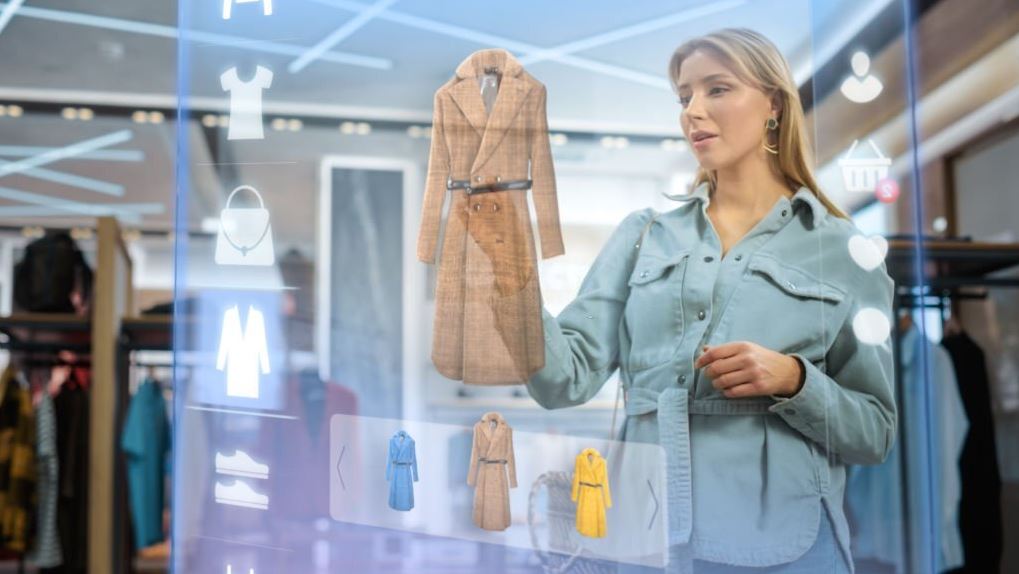Digital consultant
since 2005
Throughout this post we are going to analyse the influence of Augmented Reality or AR as a tool to boost online sales. The year 2023 has raised expectations in several sectors, especially at the commercial level.
Both the negative impact of Covid19 and the geopolitical tensions arising in 2022 have wreaked havoc on the economy. And companies have been forced to plan well in advance of existing and upcoming challenges.
Against a backdrop of many challenges, there are also some resources in favour of companies. And about this Technological innovations are of great relevance.
There are more and more tools that, provided they are used with ingenuity, can offer significant positive contributions. Is Augmented Reality or AR a valuable resource for boosting Ecommerce? We'll tell you all the details below.
What is Augmented Reality?
In a world where technological innovations are part of everyday life, keeping up with the latest developments can be a challenge. While this trend has been around for a while, it has now become extremely relevant.
Augmented reality or "Augmented Reality is a novel technique that facilitates the extension of how we perceive the physical environment, but integrated with the use of computer technology.
Although it is often confused with virtual reality, it is not the same concept, nor do they have the same applications. Because in the case of virtual reality, the experience is entirely digital.
In contrast, augmented reality or AR helps to merge a digital component with the physical world as we perceive it. Due to its many benefits, it is increasingly being integrated into different sectors.
Combining real elements in digital media
A few years ago, the idea of coexisting with virtual elements within our daily lives in the real environment might have seemed impossible. But today it is not only a reality, but it has been widely accepted.
For example, at the recent Football World Cup in Qatar, many people used Augmented Reality from their mobile phones. And with this extended match information in real timeincluding assessing possible "offside".
Although the idea of using Augmented Reality or AR may sound very futuristic, is an innovative and highly accessible tool. And it is precisely this that is channelled through the mobile phone.
The smartphone must have a camera that also works in combination with GPS or tracking technology. And the next requirement is to have the necessary software for AR image playback.
It is precisely thanks to accessibility that the fusion of virtual elements on a real plane is increasingly being exploited. And its application in the Ecommerce sector is not only possible, it is also possible to is a tool of great impetus.
How does Augmented Reality work in Ecommerce?
Augmented Reality in Ecommerce is a very important resource because consumers are interested in a mixed experience.
While it is true that the growth of e-commerce has been evident in recent years, there is still no real interest in concentrating 100% sales to the virtual world.
On the other hand, the Ecommerce trends aim to create a closer and combined experience of virtual and face-to-face technology. And for the fulfilment of this purpose Augmented Reality is significantly needed.
Virtual tester
The application of Augmented Reality in Ecommerce dedicated to the distribution of clothing, accessories and footwear is an important benefit. Several shops are working on the concept of a "virtual fitting room".
Basically, it is an ecosystem with a digital simulator that uses the camera of a mobile device, facilitates the detailed visualisation of a product. Shoppers have the opportunity to assess how they perceive themselves in a garment.
In addition to being key to the purchasing decision for check whether the product is consistent with expectationshas another use. Many computer scientists are working on making this tool influence size determination.
Bearing in mind that the main cause of product returns in the fashion sector is size faults, this initiative could offer significant benefits. By reducing the number of returns, operational costs can be reduced.
Augmented Reality in household products
Although Augmented Reality in Ecommerce can be widely used in the clothing, footwear or accessories niche, its application can go much further.
For example, the benefits of Augmented Reality or AR can be harnessed as a resource to boost the sale of household products. This is not only influenced by the use of mobile phones, but also by other devices such as tablets.
A consumer can assess in detail how new furniture would look in his living room, or how well a lamp would fit in his room. All this too helps to create a closer experience with the productThe benefits of online shopping are not to be underestimated.
Augmented Reality as a digital marketing trend
According to Google's analysis, consumers are looking for a combined experience between online and in-store shopping. Y facilitating an immersive experience is key for customer acquisition.
But how much influence could this tool have in 2023? According to research, it may be one of the most leveraged resources to sustain the growth of e-commerce.
For example, influential brands such as Miss Dior ran a campaign where they encouraged their shoppers to personifying a garden through the use of Virtual Realityand in conjunction with Google Lens functions.
And just like this, numerous other companies have started to implement Augmented Reality in Ecommerce or at least plan to do so. Although, this trend is already several years old, in 2013 IKEA continued this initiative to promote computer goods. But it looks set to be a strategy that will become more influential in the coming years.








































